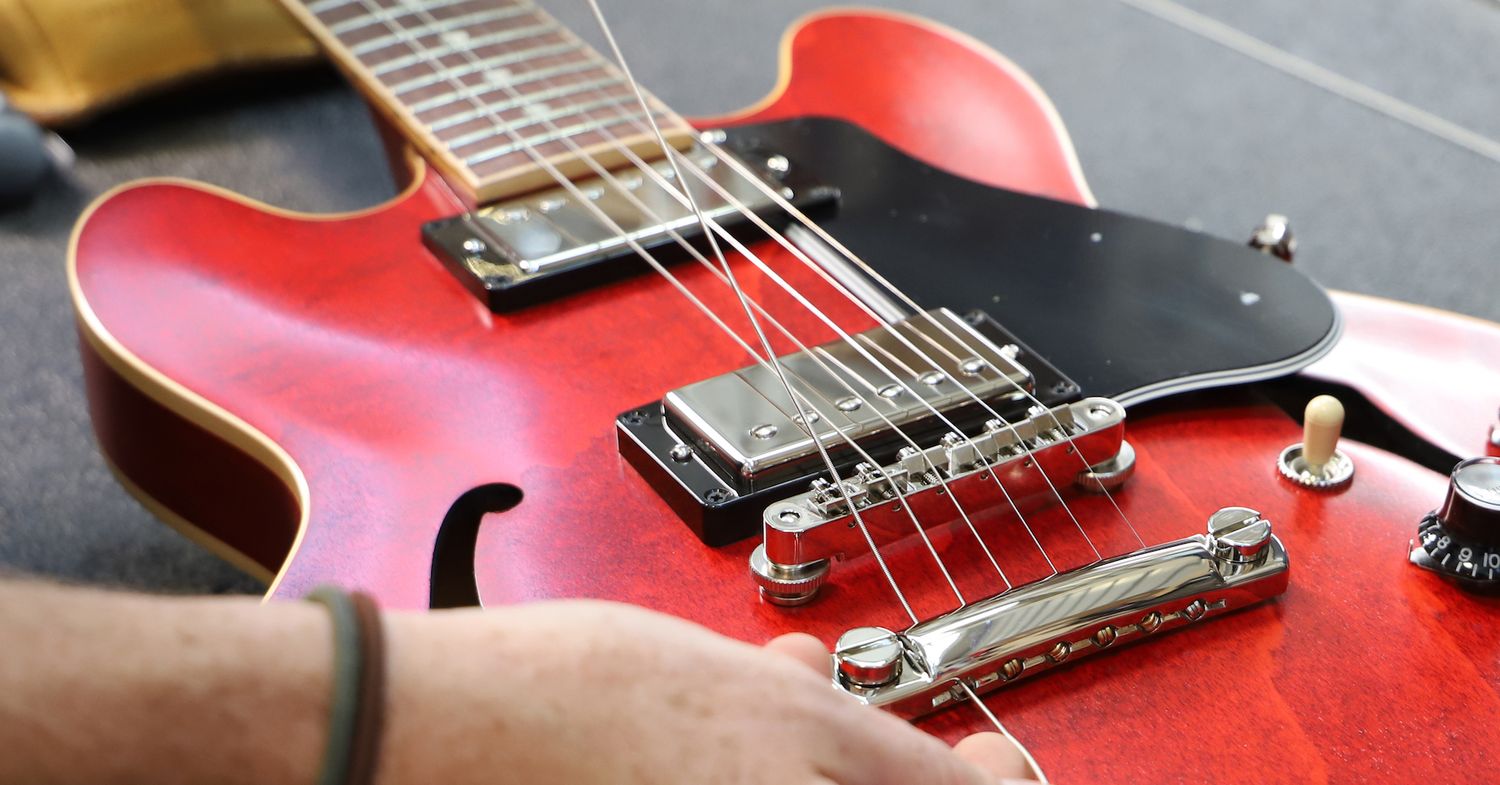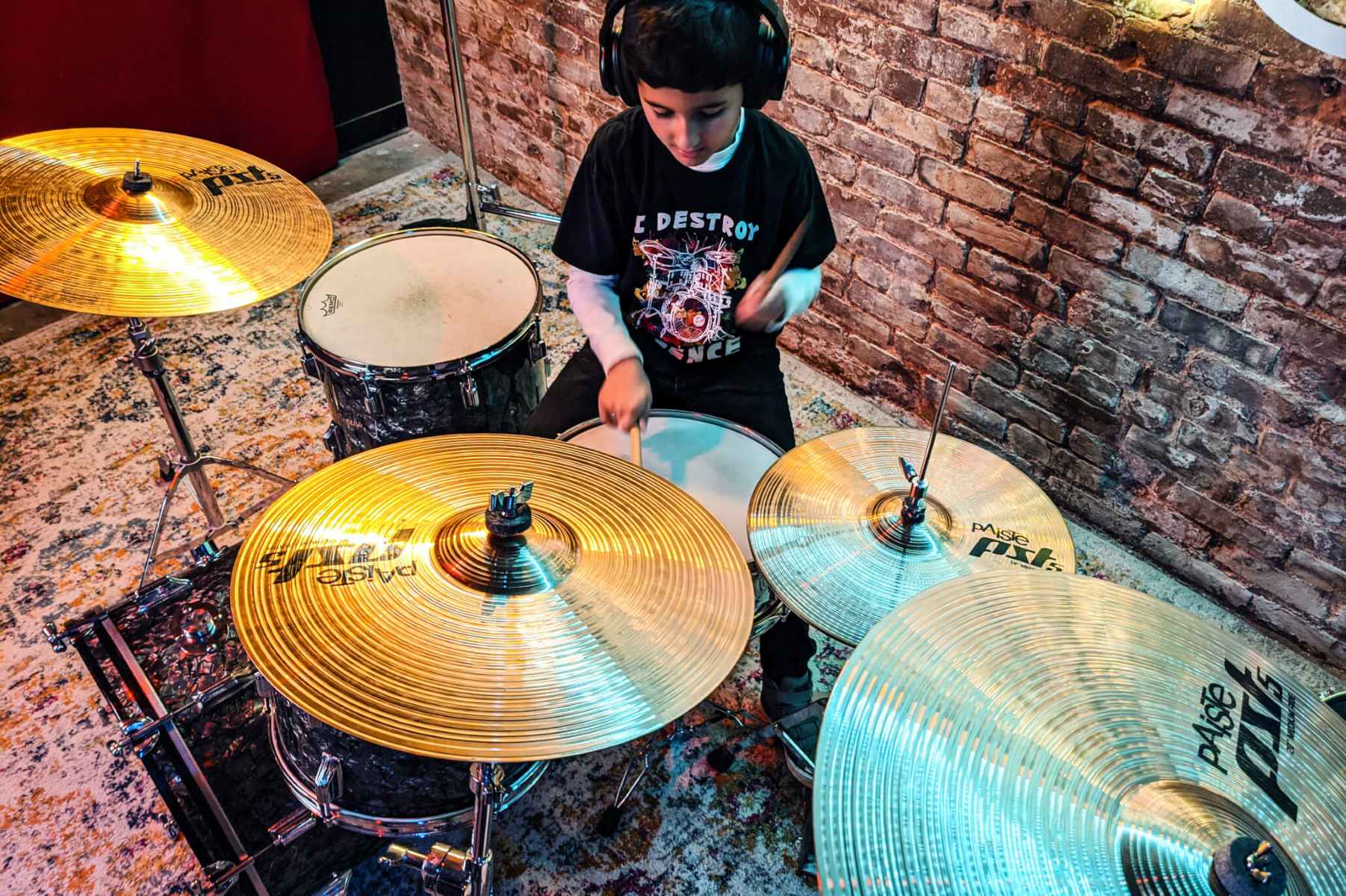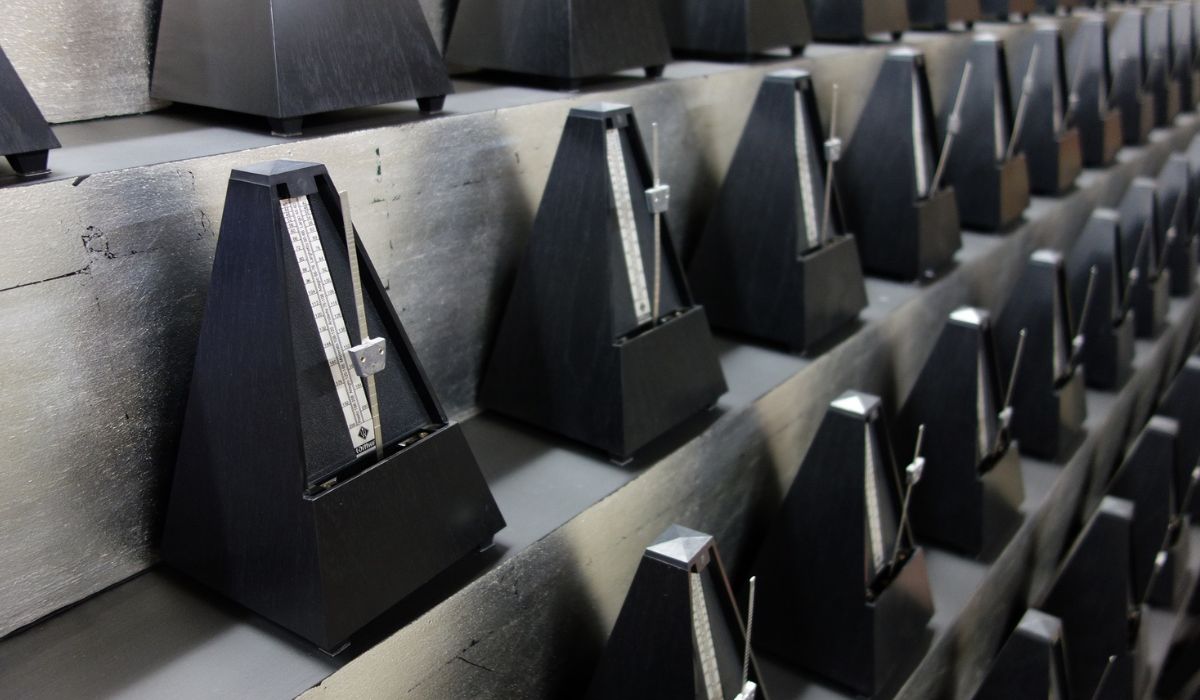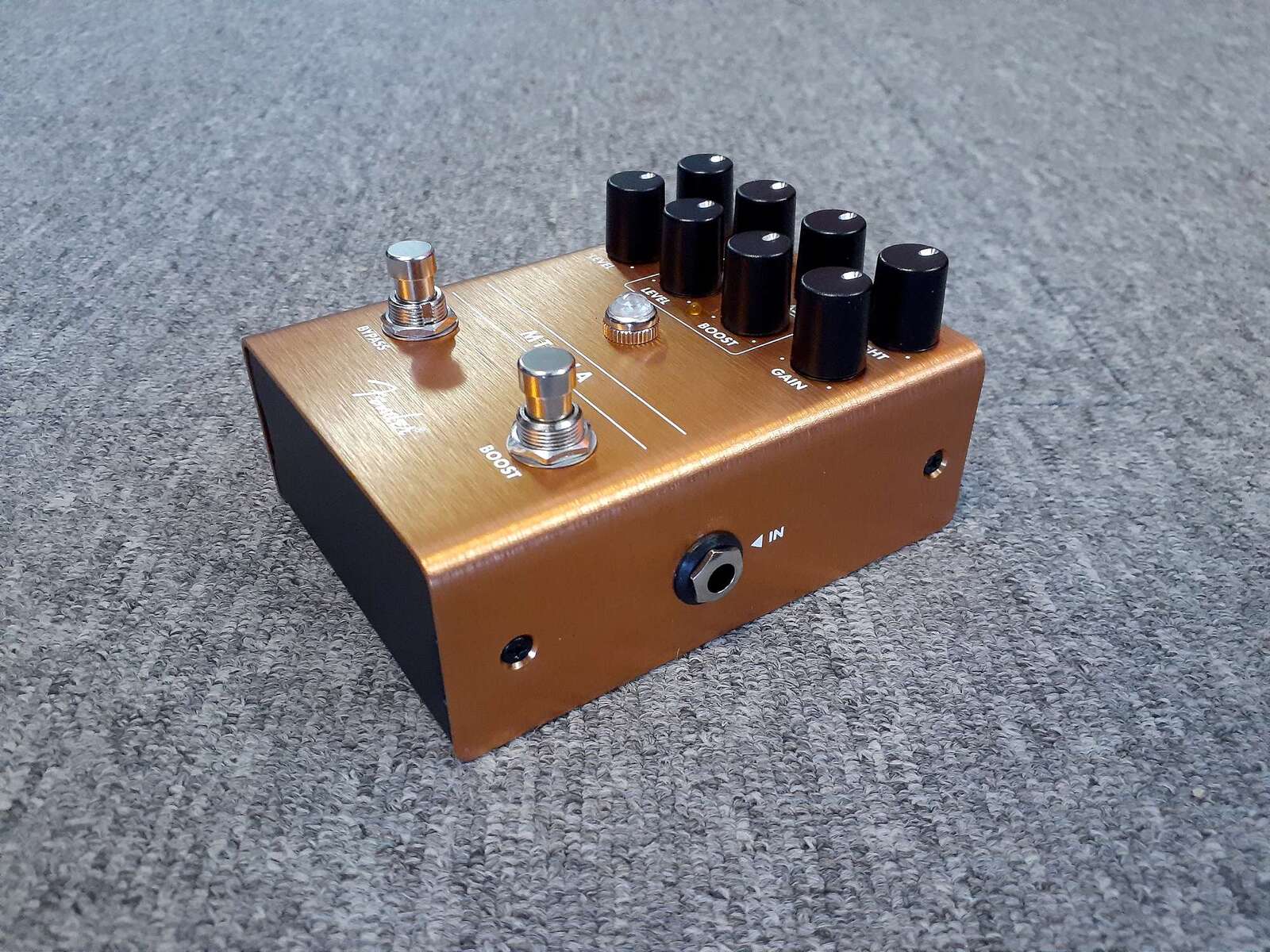Home>Instruments>Guitar>How To Make A Guitar Sound Metal


Guitar
How To Make A Guitar Sound Metal
Published: February 13, 2024
Learn how to make your guitar sound metal with our expert tips and techniques. Transform your guitar playing with our step-by-step guide.
(Many of the links in this article redirect to a specific reviewed product. Your purchase of these products through affiliate links helps to generate commission for AudioLover.com, at no extra cost. Learn more)
Table of Contents
Introduction
So, you want to make your guitar sound like it's tearing through the fabric of reality, unleashing a torrent of raw power and aggression? You've come to the right place. Achieving that iconic "metal" guitar tone is a rite of passage for many aspiring rockers and metalheads. Whether you're a seasoned guitarist looking to refine your sound or a beginner eager to dive into the world of metal, this guide will equip you with the knowledge and techniques to make your guitar scream with ferocity.
The quest for the perfect metal guitar tone is a journey that combines technical know-how with artistic expression. It's not just about cranking up the distortion and playing as fast as humanly possible (although that's definitely part of it). It's about understanding the intricate interplay between your instrument, your gear, and your playing technique to produce a sonic onslaught that commands attention and exudes unparalleled intensity.
In this comprehensive guide, we'll delve into the essential elements that contribute to crafting a killer metal guitar tone. From selecting the right guitar and pickups to dialing in the perfect amp settings and mastering picking techniques, we'll leave no stone unturned. By the time you reach the end of this article, you'll be armed with the knowledge and skills to unleash a wall of sound that will have heads banging and ears ringing.
So, grab your guitar, buckle up, and get ready to embark on a sonic adventure that will elevate your playing to new heights. It's time to unleash the beast within your guitar and unleash a metal tone that will resonate with power and fury. Let's dive in and uncover the secrets of making your guitar sound metal.
Understanding Metal Guitar Tone
Before diving into the nitty-gritty of gear and techniques, it’s essential to grasp the fundamental characteristics of metal guitar tone. At its core, metal guitar tone is defined by its aggressive, distorted, and powerful sound that cuts through the mix with razor-sharp clarity. Unlike other genres, where a clean and warm tone may be preferred, metal demands a relentless onslaught of sonic intensity that leaves a lasting impression.
The hallmark of metal guitar tone is high gain distortion, which serves as the driving force behind the genre’s sonic impact. This distortion, often achieved through specialized amplifiers and pedals, imbues the guitar sound with a ferocious edge, amplifying the harmonic content and creating a wall of aggressive sound. Additionally, metal guitar tone often features tight low-end response, allowing for thunderous palm-muted chugs and bone-crushing riffs that form the backbone of many metal compositions.
Furthermore, metal guitarists frequently employ techniques such as palm muting, pinch harmonics, and rapid alternate picking to enhance the aggression and articulation of their playing. These techniques, combined with the distinctive tone, contribute to the formidable sonic identity of metal guitar.
Understanding the sonic characteristics and playing techniques that define metal guitar tone is crucial for aspiring metal guitarists. It lays the groundwork for selecting the right gear, refining playing techniques, and ultimately crafting a tone that embodies the essence of metal music. With this foundational knowledge in place, we can now explore the specific elements that contribute to shaping a formidable metal guitar tone.
Choosing the Right Guitar and Pickups
When it comes to crafting a metal guitar tone, the choice of guitar and pickups plays a pivotal role in shaping the sonic landscape. The guitar itself serves as the vessel through which the player’s expression is channeled, while the pickups act as the sonic capture devices, translating the vibrations of the strings into electrical signals. For metal aficionados, certain characteristics in both the guitar and pickups are highly sought after to achieve the desired tone.
First and foremost, the guitar’s construction and tonewoods significantly impact its sonic potential. Solid-body guitars, such as the iconic designs offered by brands like Jackson, Ibanez, and ESP, are favored for their inherent sustain, clarity, and resilience to feedback, making them ideal for high-gain applications. Additionally, tonewoods like mahogany and basswood are prized for their balanced tonal characteristics, offering a potent foundation for aggressive riffing and soloing.
Equally crucial are the pickups, which come in various configurations such as humbuckers, single-coils, and active pickups. In the realm of metal, humbucking pickups reign supreme due to their ability to minimize unwanted noise while delivering a powerful, thick sound that complements high-gain amplification. Popular choices include the iconic EMG 81 and 85 pickups, known for their tight low-end response and searing lead tones, as well as Seymour Duncan’s Blackouts and DiMarzio’s Evolution pickups, each offering its own unique sonic character tailored for metal.
Furthermore, the pickup arrangement, such as the classic pairing of a bridge humbucker with a neck humbucker, provides versatility for achieving a wide range of tones, from searing leads to bone-crushing rhythm work. The synergy between the guitar’s construction and the pickups’ characteristics is paramount in sculpting a metal guitar tone that exudes power, articulation, and clarity.
By carefully selecting a guitar with the right tonal attributes and pairing it with pickups designed to unleash the full sonic potential of metal, guitarists can lay a solid foundation for crafting a tone that commands attention and leaves a lasting impression.
Selecting the Right Amp and Effects
Once you’ve chosen the right guitar and pickups, the next crucial step in shaping a formidable metal guitar tone is selecting the appropriate amplifier and effects. The amplifier serves as the sonic powerhouse, shaping the raw guitar signal into a ferocious wall of sound, while effects further enhance and sculpt the tone to meet the demands of metal music.
For metal guitarists, high-gain amplifiers are the cornerstone of their sonic arsenal. These amplifiers are specifically designed to deliver copious amounts of distortion, allowing for the aggressive saturation and sustain required for blistering riffs and searing solos. Brands like Mesa/Boogie, Peavey, and Marshall offer a diverse range of high-gain amplifiers tailored to the needs of metal players, providing a platform for unleashing sonic mayhem.
In addition to high-gain amplifiers, the inclusion of effects pedals can elevate the sonic impact of the guitar tone. Distortion and overdrive pedals, such as the iconic Tube Screamer and the Boss Metal Zone, can further push the amplifier into searing saturation, adding layers of harmonic richness and aggression to the tone. Moreover, effects like noise gates are essential for taming the inherent noise associated with high-gain setups, ensuring a tight and focused sound, especially during palm-muted passages and silent pauses.
Furthermore, modulation effects such as chorus, flanger, and phaser can add depth and movement to lead passages, while delay and reverb effects contribute to creating expansive and atmospheric textures within metal compositions. When used judiciously, these effects can enhance the sonic palette, adding dimension and complexity to the guitar tone without compromising its inherent aggression.
By carefully selecting an amplifier capable of delivering high-gain saturation and incorporating effects that complement the sonic characteristics of metal music, guitarists can unleash a formidable array of tones that span from bone-crushing heaviness to ethereal leads, all within a single sonic landscape.
Tuning and String Gauges
When it comes to crafting a metal guitar tone, tuning and string gauges play a crucial role in shaping the sonic characteristics and playability of the instrument. Metal guitarists often explore alternate tunings and select specific string gauges to achieve the desired tonal depth, tension, and articulation required for executing thunderous riffs and blistering solos.
One of the defining features of metal music is the utilization of alternate tunings to achieve a darker, heavier sound. Tunings such as Drop D, Drop C, and even lower tunings like Drop B and Drop A# are prevalent in metal, allowing for extended low-end resonance and facilitating the execution of crushing power chords and menacing riffage. These tunings provide a sonic foundation that resonates with primal aggression, setting the stage for the sonic onslaught that defines metal guitar tone.
Equally important is the selection of string gauges, which directly influences the tension, feel, and tonal response of the guitar. In the realm of metal, heavier string gauges are often favored for their ability to withstand the intense picking and bending demands of the genre while delivering a tight and focused sound. Common choices include sets with gauges ranging from .010 to .052 for standard tuning and thicker sets such as .011 to .056 for lower tunings, providing the necessary heft and stability to handle aggressive playing styles and low-frequency resonance.
Moreover, the choice of string material, whether nickel-wound, stainless steel, or other alloys, can further tailor the tonal characteristics, offering enhanced brightness, durability, and sustain to complement the aggressive nature of metal guitar tone.
By exploring alternate tunings and selecting the appropriate string gauges and materials, metal guitarists can harness the full sonic potential of their instrument, unleashing a thunderous and articulate tone that resonates with power and aggression, while providing the necessary stability and playability to conquer the demands of metal music.
Picking and Strumming Techniques
Mastering the art of picking and strumming techniques is essential for achieving the precision, speed, and aggression that define the quintessential metal guitar tone. Metal music often demands rapid-fire riffing, blistering solos, and relentless palm-muted chugs, requiring a nuanced approach to picking and strumming that maximizes articulation and intensity.
One of the foundational techniques in metal guitar playing is alternate picking, where the guitarist meticulously alternates between downward and upward strokes to execute rapid note sequences with precision and fluidity. This technique is instrumental in achieving the rapid-fire lead passages and intricate rhythm patterns that are synonymous with metal music, allowing for blistering speed and articulate note definition.
Additionally, palm muting is a cornerstone technique that imparts the characteristic percussive and aggressive quality to metal guitar tone. By lightly resting the picking hand on the strings near the bridge, metal guitarists can achieve a tight and focused sound, ideal for executing chugging rhythms and accentuating the attack of each note, creating a relentless sonic onslaught that commands attention.
Furthermore, incorporating techniques such as pinch harmonics adds an extra layer of sonic intensity and expression to metal guitar playing. By deftly executing pinch harmonics, where the pick and thumb collaborate to produce harmonic overtones, guitarists can unleash searing, vocal-like tones that soar above the mix, adding a visceral and emotive quality to their playing.
Strumming techniques, particularly when executing power chords and rapid downstrokes, contribute to the aggressive and propulsive nature of metal guitar tone. The controlled yet forceful execution of strumming patterns is integral to delivering the relentless energy and drive that underpin many metal compositions, propelling the music forward with unyielding power.
By honing these picking and strumming techniques, metal guitarists can unlock the full potential of their instrument, unleashing a sonic fury that captivates audiences and elevates their playing to new heights of intensity and expression.
Conclusion
Congratulations! You’ve embarked on a sonic journey that has unveiled the secrets of crafting a formidable metal guitar tone. Through a meticulous exploration of gear, techniques, and sonic principles, you’ve gained the knowledge and insight to harness the raw power and aggression that define the essence of metal music.
By understanding the fundamental characteristics of metal guitar tone, you’ve embraced the aggressive distortion, tight low-end response, and expressive techniques that form the bedrock of the genre. Armed with this knowledge, you’ve learned to select the right guitar and pickups, ensuring that your sonic arsenal is equipped to deliver the ferocious and articulate tones demanded by metal music.
Furthermore, you’ve delved into the realm of amplifiers and effects, discovering the transformative power of high-gain amplification and the nuanced art of sculpting your tone with precision and aggression. The careful selection of tuning and string gauges has provided you with the stability and tonal depth required to unleash thunderous riffs and blistering solos, while mastering picking and strumming techniques has honed your ability to deliver precision, speed, and intensity with every note.
As you stand at the crossroads of sonic exploration, armed with the knowledge and techniques to make your guitar sound metal, remember that the pursuit of the perfect tone is a deeply personal and ongoing endeavor. Embrace experimentation, forge your sonic identity, and let your passion for metal music fuel your creative journey.
Whether you’re summoning the spirits of metal’s forefathers or charting new sonic territories, your quest for the ultimate metal guitar tone is a testament to your dedication and artistry. So, plug in, crank up the gain, and let your guitar roar with the unbridled fury and power of metal. The stage is set, the world awaits, and your sonic odyssey has only just begun.
Now, go forth and unleash a metal tone that resonates with unparalleled intensity and passion. The world is your stage, and your guitar is the conduit through which you’ll channel the raw energy and aggression that define the timeless allure of metal music. Let your sonic legacy be written in distortion and fury, and may your guitar forever sound metal.











